Gotta collect ’em all: Global resurgence of interest in Pokemon trading cards, including in S’pore
Sign up now: Get tips on how to grow your career and money
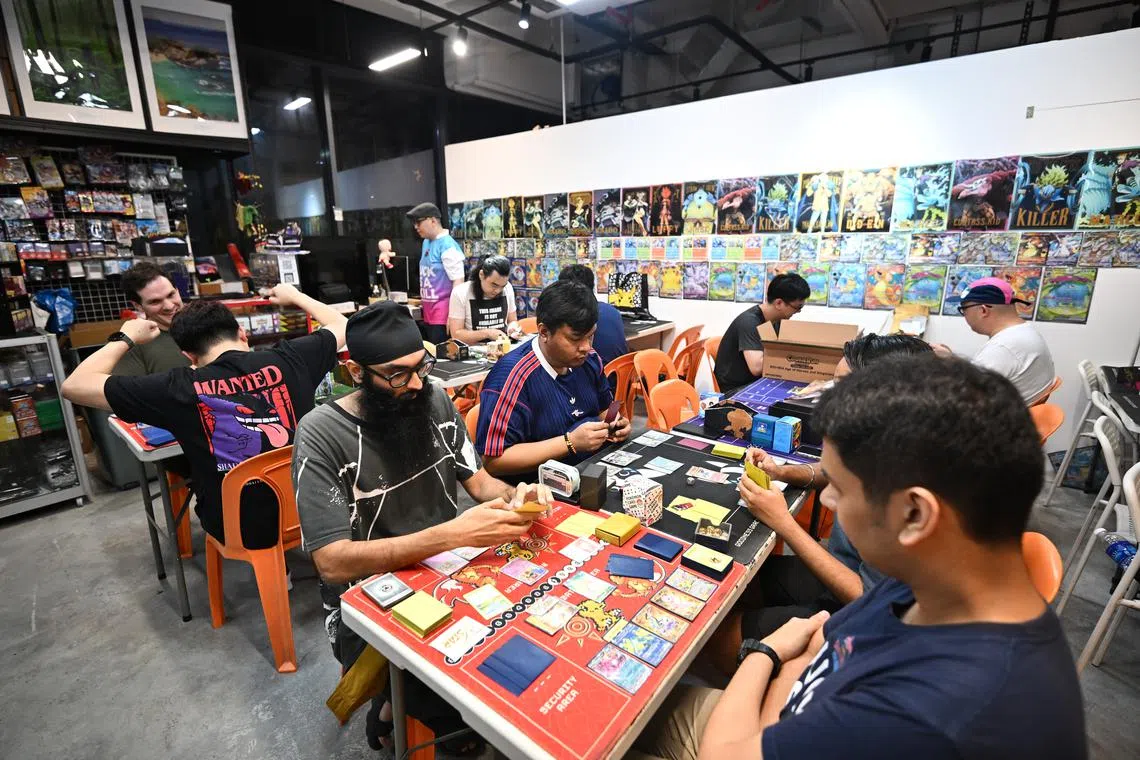
Goodness Gracious Games has experienced a jump of about 60 per cent in its customers, compared with before the Covid-19 pandemic.
ST PHOTO: LIM YAOHUI
Follow topic:
SINGAPORE – When Mr Ng Kiat Seng opened his convenience store in Jalan Besar in 2020, there was limited footfall due to safe-distancing measures during the Covid-19 pandemic.
To supplement sales, the 39-year-old experimented with the sale of a small batch of Pokemon trading cards.
They sold out quickly and he started bringing in more stock. Because of the popularity of the cards, he eventually evolved his store – Concept City – to one that mainly buys and sells Pokemon cards today.
Similarly, two other shops and enthusiasts here The Straits Times spoke to say they have seen an increase in interest for the trading cards since the pandemic.
In January, the police had to disperse a large crowd – reportedly 1,000-strong – at Changi Airport’s Jewel
The launch event was eventually cancelled due to safety concerns.
With Pokemon Day commemorated by enthusiasts on Feb 27, ST looks deeper into why these cards are such a hit among Singaporeans.
The origin story
Pokemon cards were first released in 1996 by the Pokemon Company.
Long-time fan Bertrand Yan said they were popular in the early years. “In the mid-2000s, Pokemon became global. Everyone watched anime. Everyone had the game cards,” said the 26-year-old, who competed in the world championships in Washington, DC, in 2019.
Mr Yan said the cards’ popularity waned in the 2010s as their original target audience – young children – outgrew them and moved on to other interests.
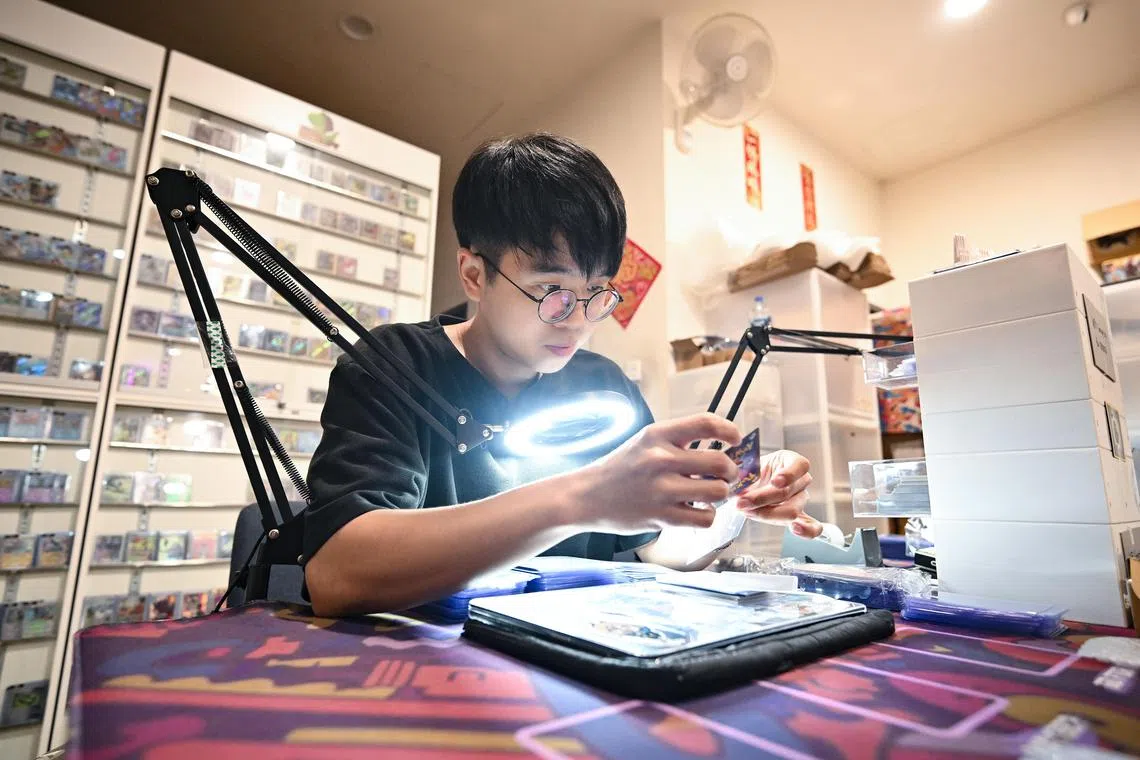
Mr Xavier Sin, 25, is a grading consultant who evaluates the condition and quality of Pokemon cards at Concept City, a card shop.
ST PHOTO: LIM YAOHUI
The renaissance
There are several reasons for the resurgence of Pikachu and company. For one thing, the pandemic forced people to stay home and some started new hobbies, such as collecting Pokemon cards, Mr Yan said.
Online personalities such as Logan Paul also played a part in this revival.
In April 2022, the popular American wrestler showed off a rare Pikachu card – worth US$5.28 million (S$7.07 million) – as he made his entrance to his match at popular wrestling entertainment event Wrestlemania. Paul currently has 23.6 million subscribers on YouTube.
Mr Mason Koh, communications head at 1Collectibles, a trading card distributor and retailer, said: “He amplified it to his fans, who are mostly kids.”
Polytechnic student Justin Ng started his collection after watching videos by Pokemon card influencers on platforms such as TikTok.
The 20-year-old said: “There are a lot of TikTok ‘Lives’ (live broadcasts) where they open hundreds of card packs. I can sit there for hours just watching.
“There’s a sense of excitement and satisfaction – akin to opening blind boxes – of not knowing what you’re going to get.”
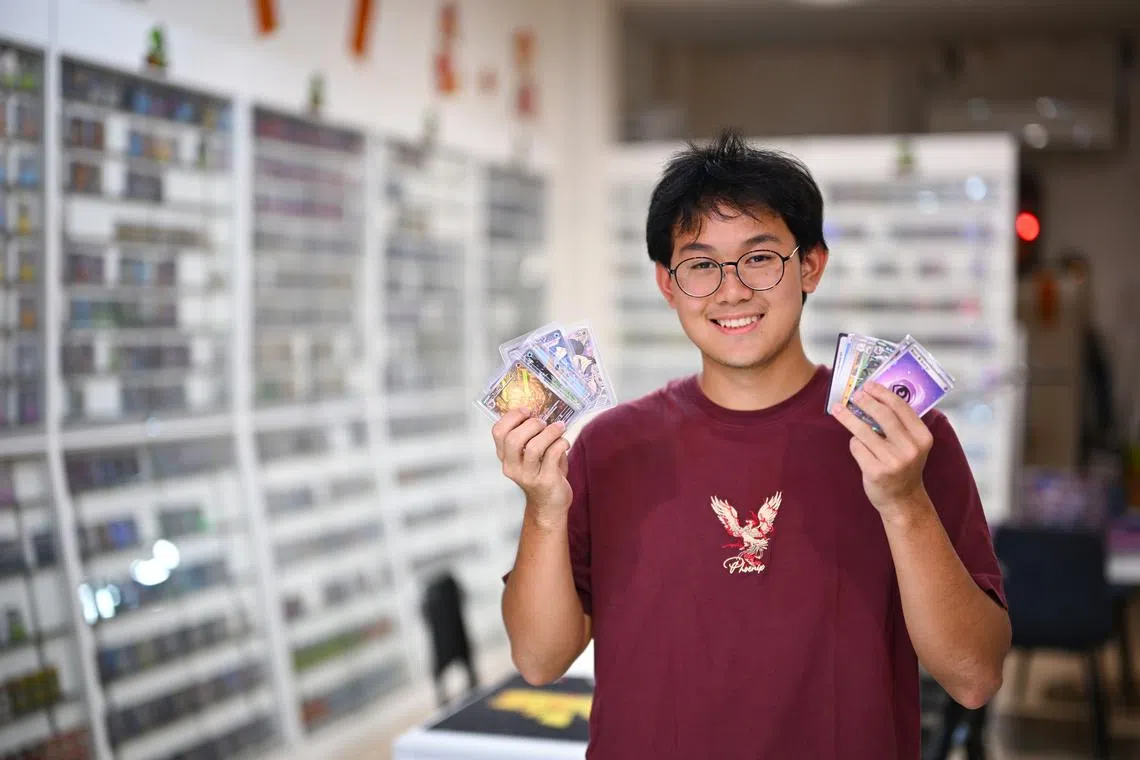
Polytechnic student Justin Ng started his collection after watching videos by Pokemon card influencers on platforms such as TikTok.
ST PHOTO: LIM YAOHUI
The Pokemon Company printed 11.9 billion cards from March 2023 to 2024, compared with an average of 1.5 to 2 billion cards annually before 2019, according to interest site PokeBeach, citing statistics from the Japanese corporation.
In Singapore, there are 191 Pokemon card retailers, according to the product’s official website. There are 46 “gyms” here – stores where collectors can use the cards for “battles”.
Goodness Gracious Games, which holds weekly tournaments, has experienced a jump of about 60 per cent in its customers, compared with before the pandemic, said owner Thomas Xu. Concept City and 1Collectibles have likewise reported a surge in demand for the cards.
Characters and (spending) power
The three shops told ST their clientele is mostly male and aged 16 to 40, though they are seeing more female collectors.
Collectors can buy either packs of 10 cards, which cost from $4.50, or specific individual cards, whose price varies according to the rarity and condition.
1Collectibles’ Mr Koh said his clients, typically aged 25 and above, spend around $300 to $400 each visit.
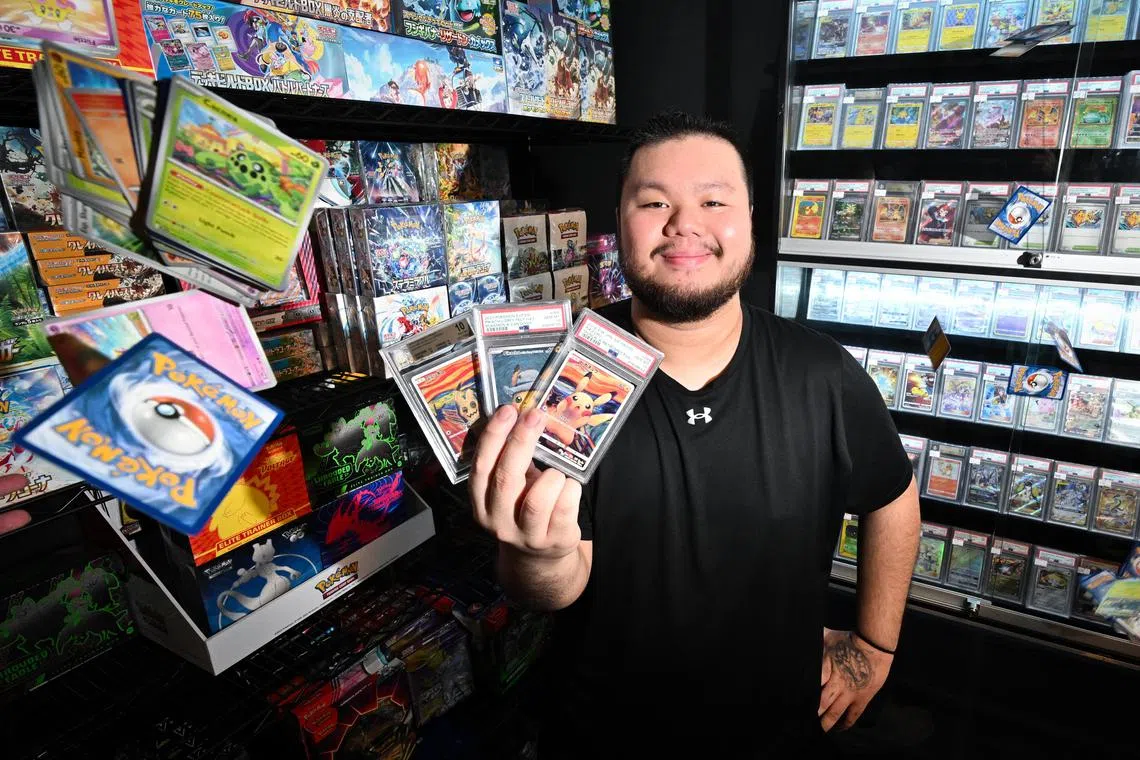
Mr Mason Koh, 25, holds up three Pokemon cards which are sold at the trading card store, 1Collectibles.
ST PHOTO: LIM YAOHUI
Concept City’s customers typically spend $80 to $100 each visit, its head of operations Lee Wen Hao estimates, as the store’s clientele is younger and it sells cards that are more wallet-friendly.
Goodness Gracious Games, whose customers are mainly players instead of collectors, said the average spending a visit is about $30 to $40.
What is the draw?
Concept City’s Mr Lee said modern-day cards have varying designs that appeal to the new and young collectors, and also pull the old ones back.
1Collectibles founder Mark Tan said the cards have distinctive art styles.
The 34-year-old cited Yuka Morii as an example. The 60-year-old Japanese artist makes a Pokemon out of PlayDoh and takes a photo of it for the card.
Mr Tan added that there were also cards featuring the Pikachu and Mimikyu characters fashioned after Norwegian artist Edvard Munch’s renowned painting, The Scream. Each costs between $3,500 and $5,000.

Modern-day Pokemon cards come in a variation of art styles. These cards, which are fashioned from Edvard Munch’s Scream painting, are valued at $3,500 and above.
ST PHOTO: LIM YAOHUI
The Pokemon Company also taps the nostalgia of old collectors by introducing card series that hark back to its early days, said 1Collectibles’ Mr Koh.
Among its recent bestsellers is the “Scarlet and Violet – 151”, which features characters and settings from Pokemon’s initial years.
Concept City’s Mr Lee said older collectors make up around half of his clientele. “When they were young, they could hardly afford one pack. Now that they have more money, they may buy one box, which has 36 packs. Some even buy cartons which hold six boxes, which is 216 packs.
“It’s pretty crazy, they’re spending hundreds and thousands.”
The gamers
Other than being collectibles, the cards are also elements in a turn-based game, in which players – each starting with a deck of 60 – try to defeat one another’s Pokemon.
Some players, such as Mr Yan, grew up with the card game.
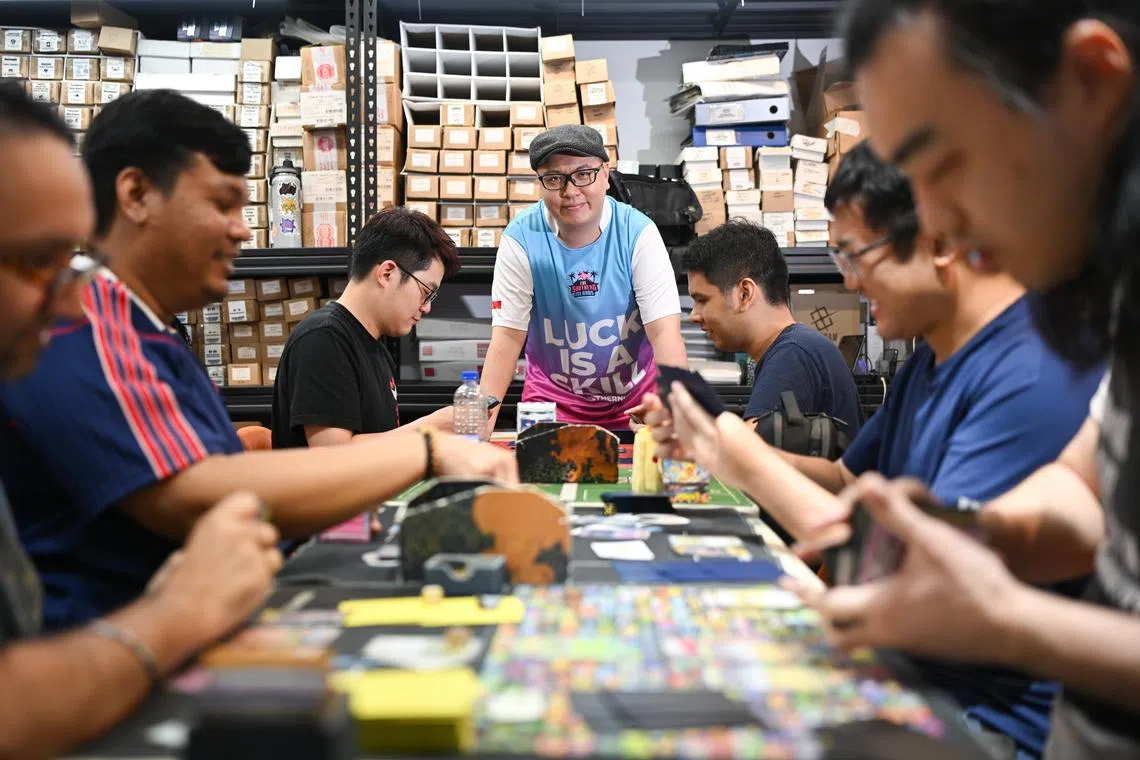
Mr Thomas Xu, owner of Goodness Gracious Games, watches as customers play the Pokemon card game during a weekly tournament.
ST PHOTO: LIM YAOHUI
He said: “Back then, everyone had the Nintendo Game Boy, but my parents bought some cards, which we used to play at night.”
There are several local tournaments – such as the Great Ball league – as well as annual national championships. Players who do well in such tournaments may qualify for the world championships.
For the likes of sports commentator Eshpal Mann, 33, it is the sense of camaraderie and community that drew him to the card game.
He said: “When you play digital games, like on the Nintendo Switch or online, it may be someone you don’t know and you don’t really play it together in person.
“Whereas in a card game, there’s human interaction and you can feel the cards. It’s similar to chess and mahjong, in which you’re moving pieces around.”
Angelica Ang is a journalist on The Straits Times’ breaking news team, where she covers the latest local and international developments.


